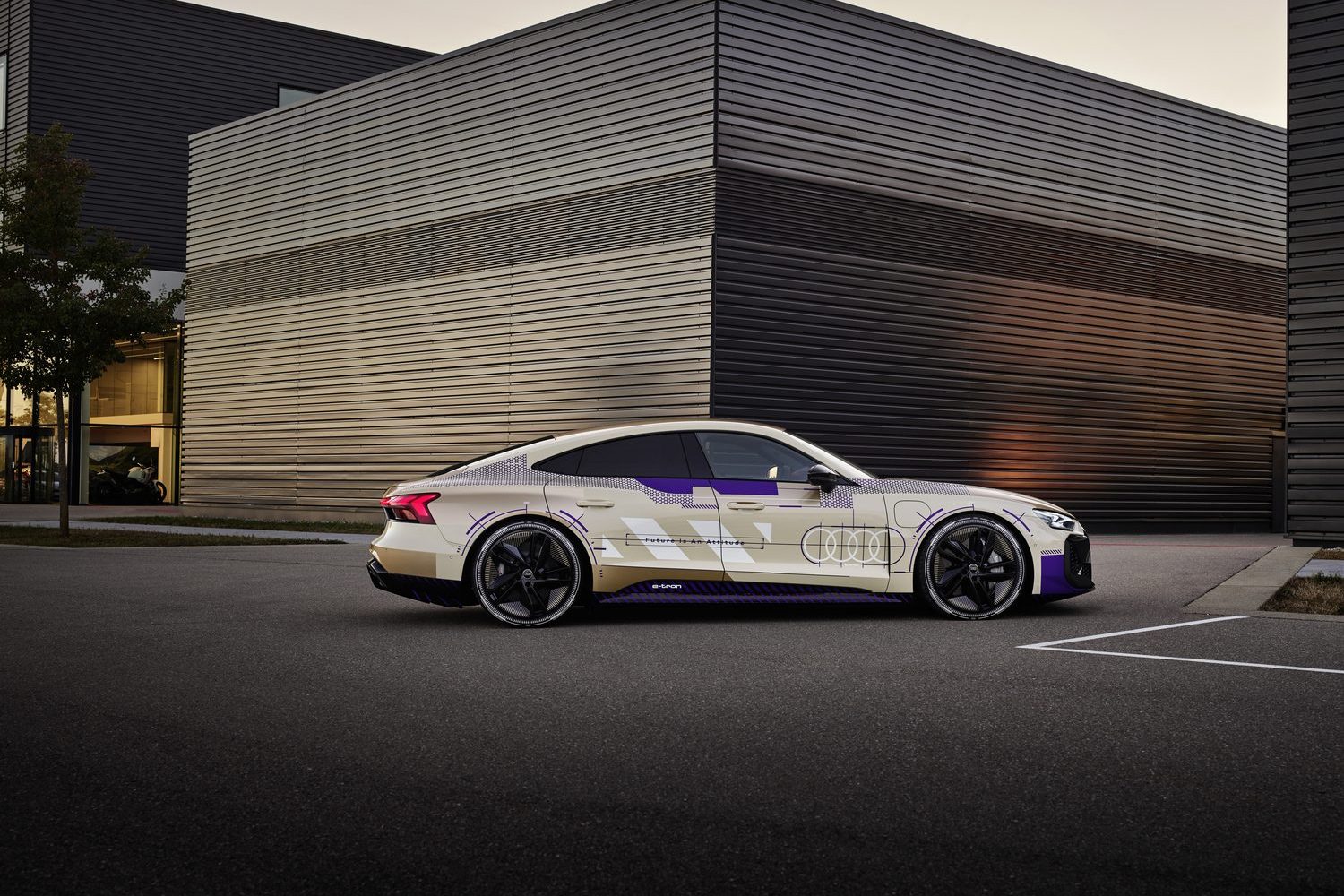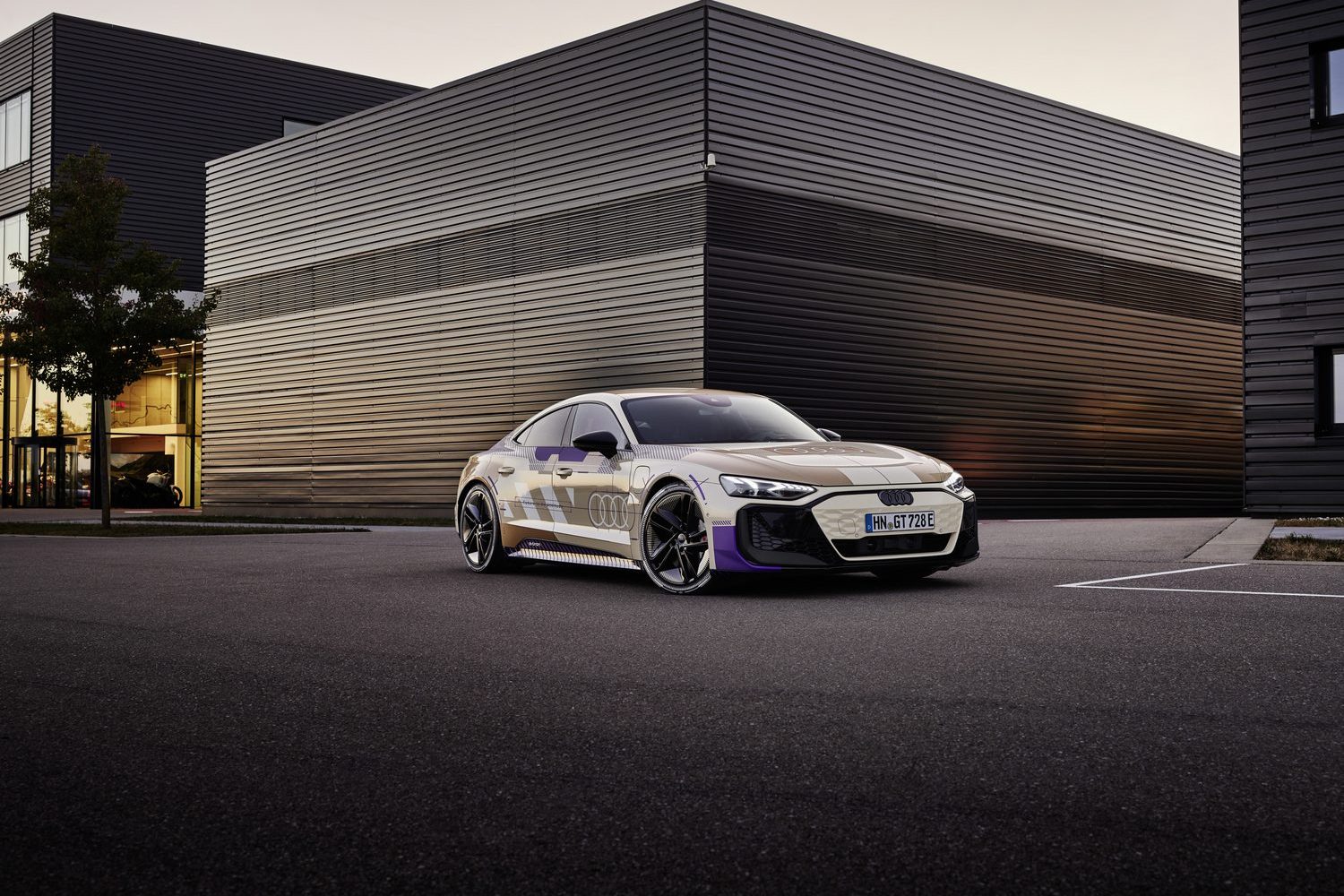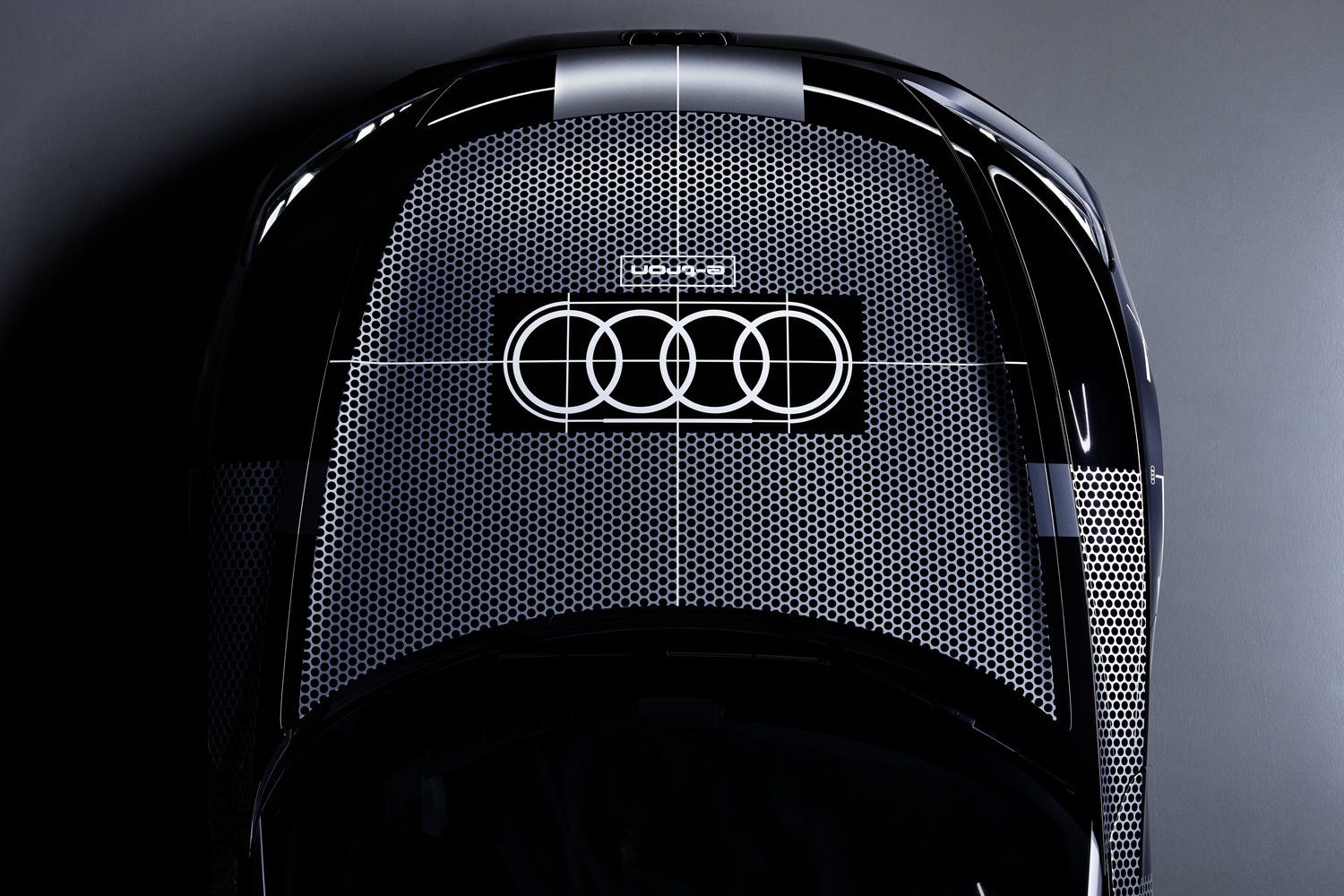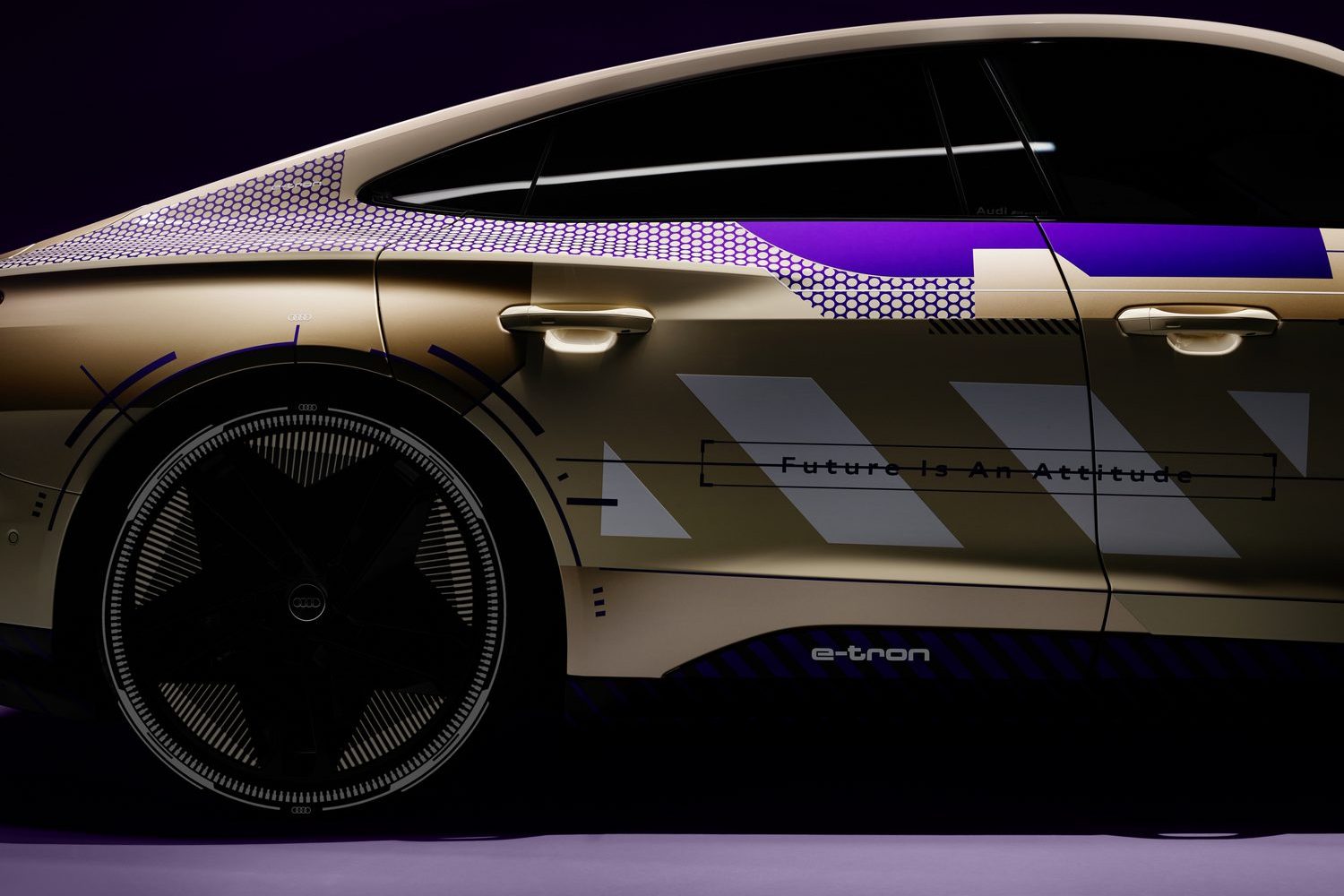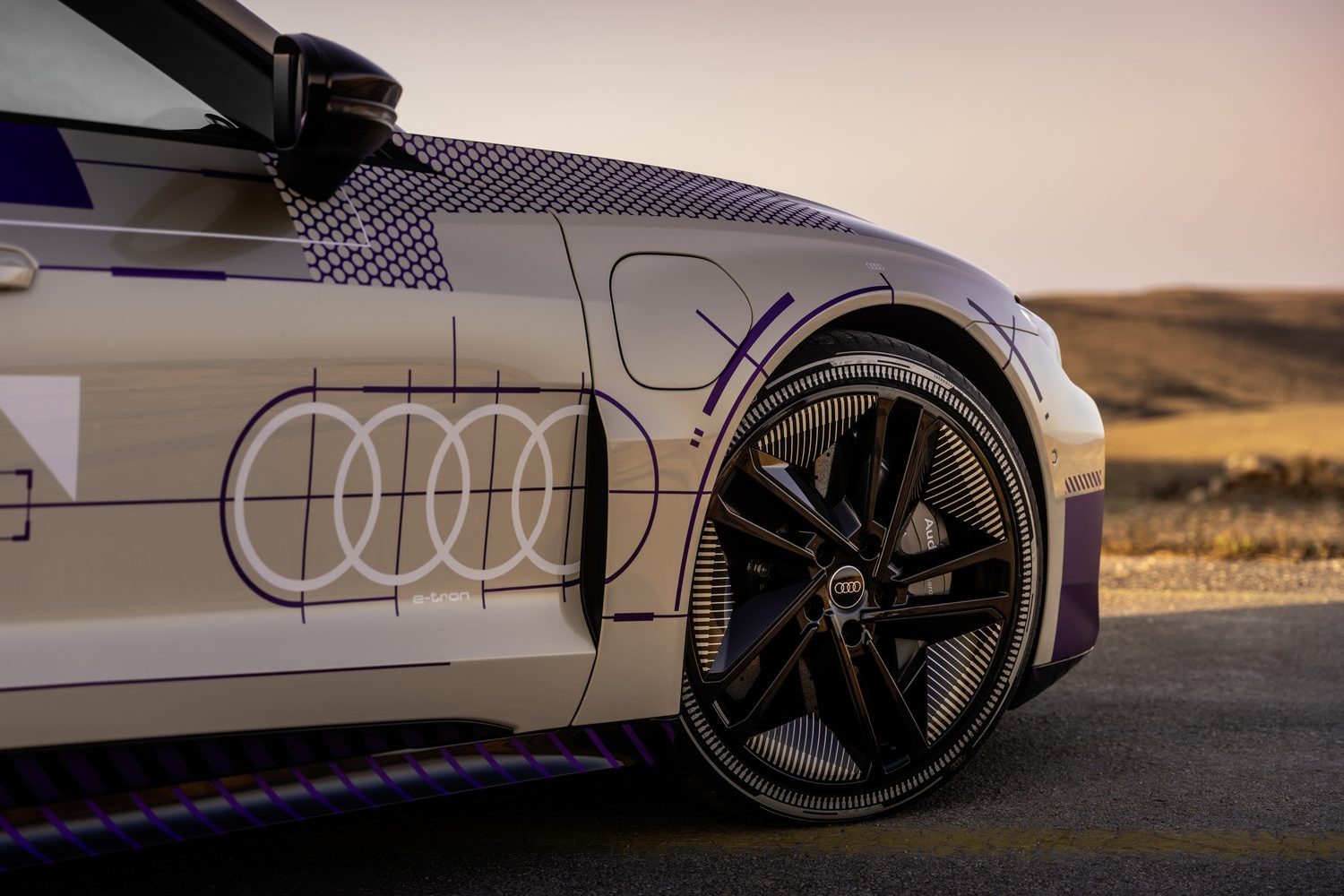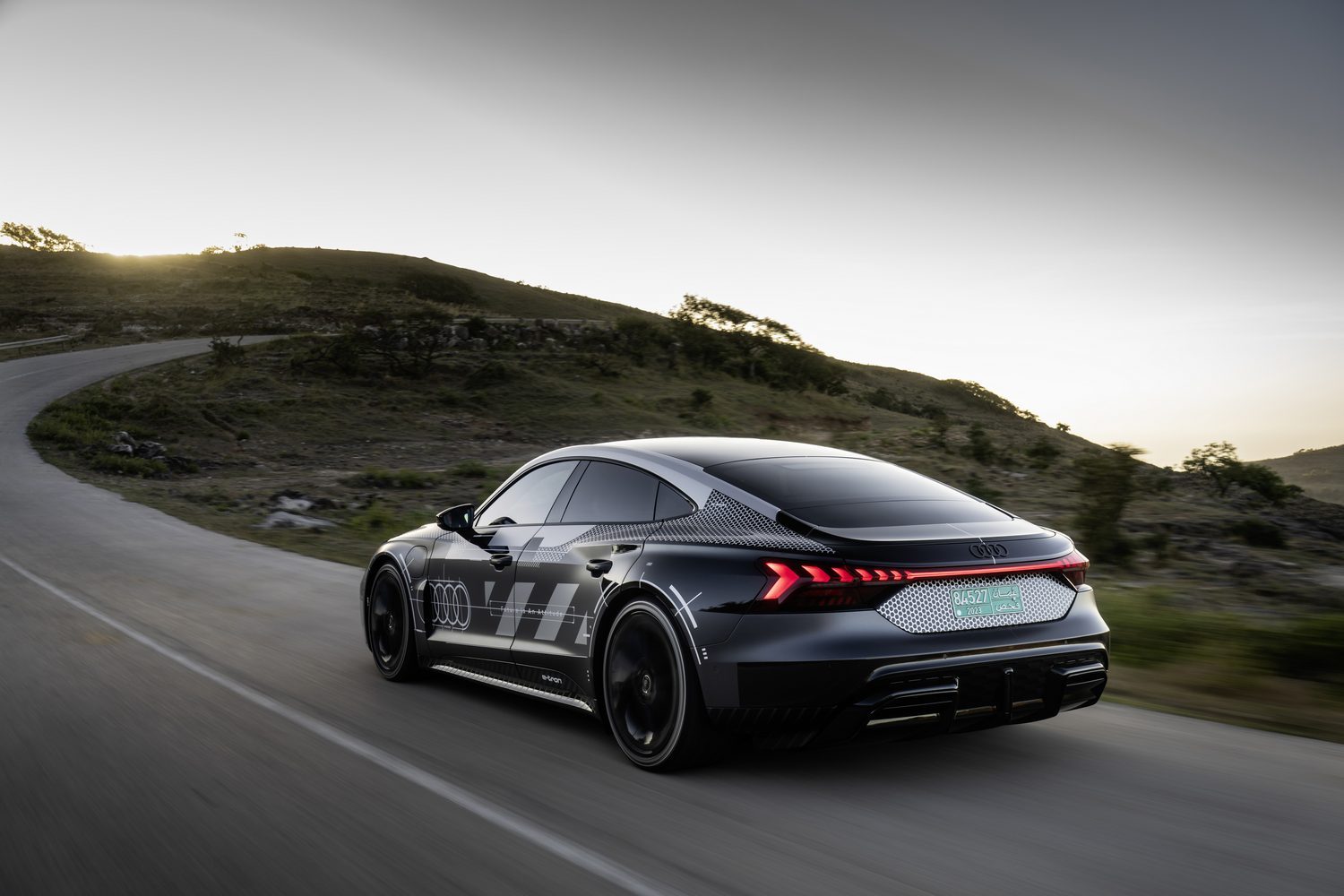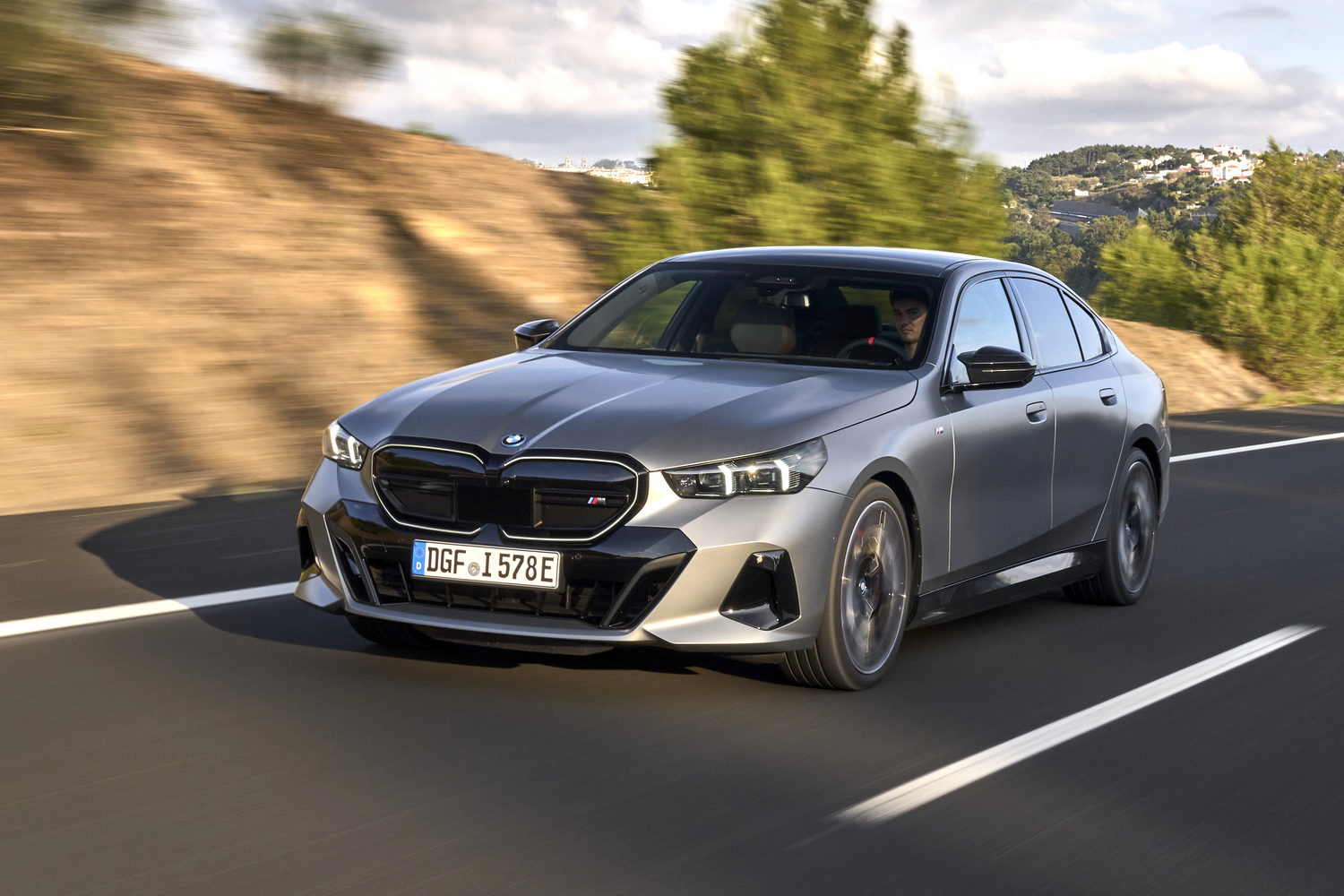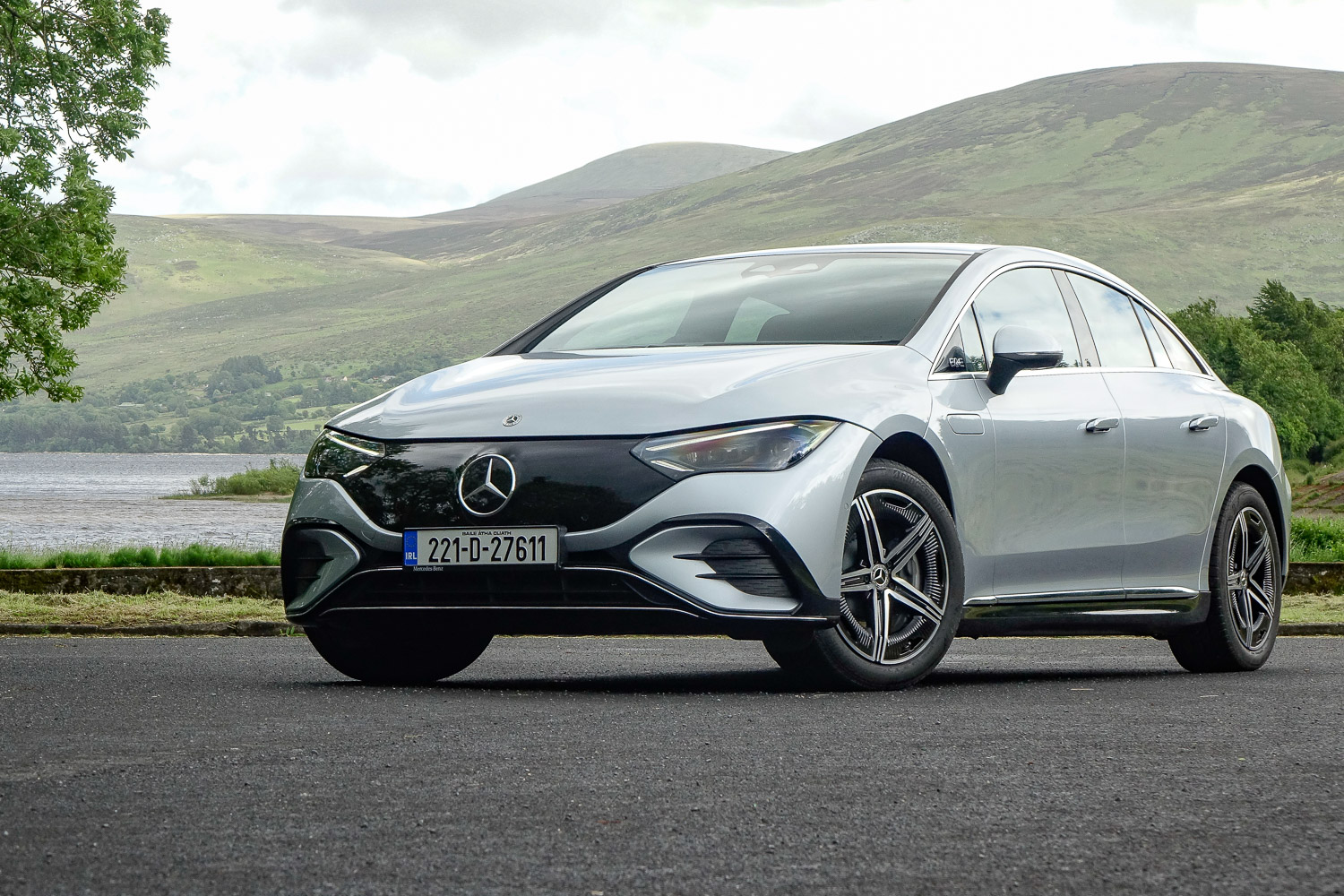Months before Porsche told the world all about its new 'PAR' active suspension system, Audi gave us an opportunity to drive its take on it, in a pre-production prototype previewing a suite of updates coming to the Audi e-tron GT later in 2024.
In the metal
The colourful 'camouflage' wrap covering our test car doesn't seem to have a lot to do, as the sheet metal underneath appears barely changed. Compare this prototype with the current Audi RS e-tron GT and you'll spot that the 'bumper' panel below the headlights and bonnet - wrapping around the front of the car - has been restyled with less black material - though it's unclear if the 'grille' panel in the centre will remain body-colour.
Surprisingly, given Audi's focus on the technology, the LED lights front and rear appear unchanged, though there is a redesigned aerodynamic diffuser in the back bumper.
The interior of the prototype was mostly covered up so we can't tell you much about changes to that, though it's worth looking at the updates to the e-tron SUV (now the Q8 e-tron) to get a feel for how Audi is likely to modernise the cabin. You can see the glorious slim-rimmed, Alcantara-trimmed steering wheel in our single shot of the interior, along with special-looking sports seats.
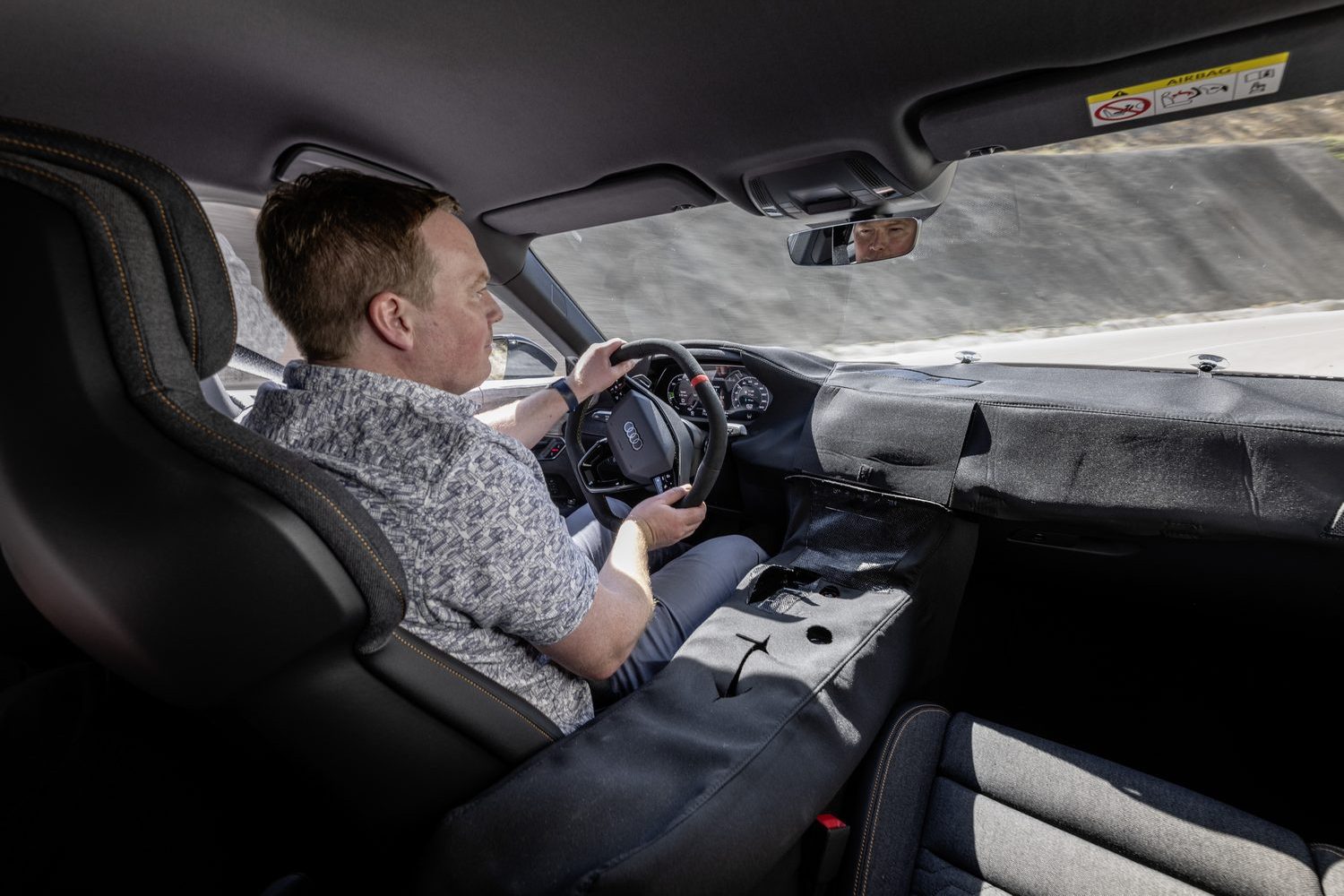
Driving it
While Audi has confirmed that it will enhance the performance and efficiency of the e-tron GT in time for the 2024 update, it would not be drawn on by how much. The current RS e-tron GT summons up to 645hp and 830Nm of torque at times so perhaps the new one will hit 700hp. After all, there are versions of the new Porsche Taycan - which shares underpinnings with this Audi, remember - with over 1,000hp. The prototype certainly felt rapid, but smooth in its acceleration with an easy-to-modulate accelerator pedal. It's certainly not all-or-nothing in its performance delivery.
To go with the higher performance, faster charging is also on the way and, again while Audi hasn't said as much, it's a reasonable assumption that the e-tron GT will adopt the new Porsche Taycan's charging hardware to allow up to 320kW charging on DC power or 22kW on certain AC chargers.
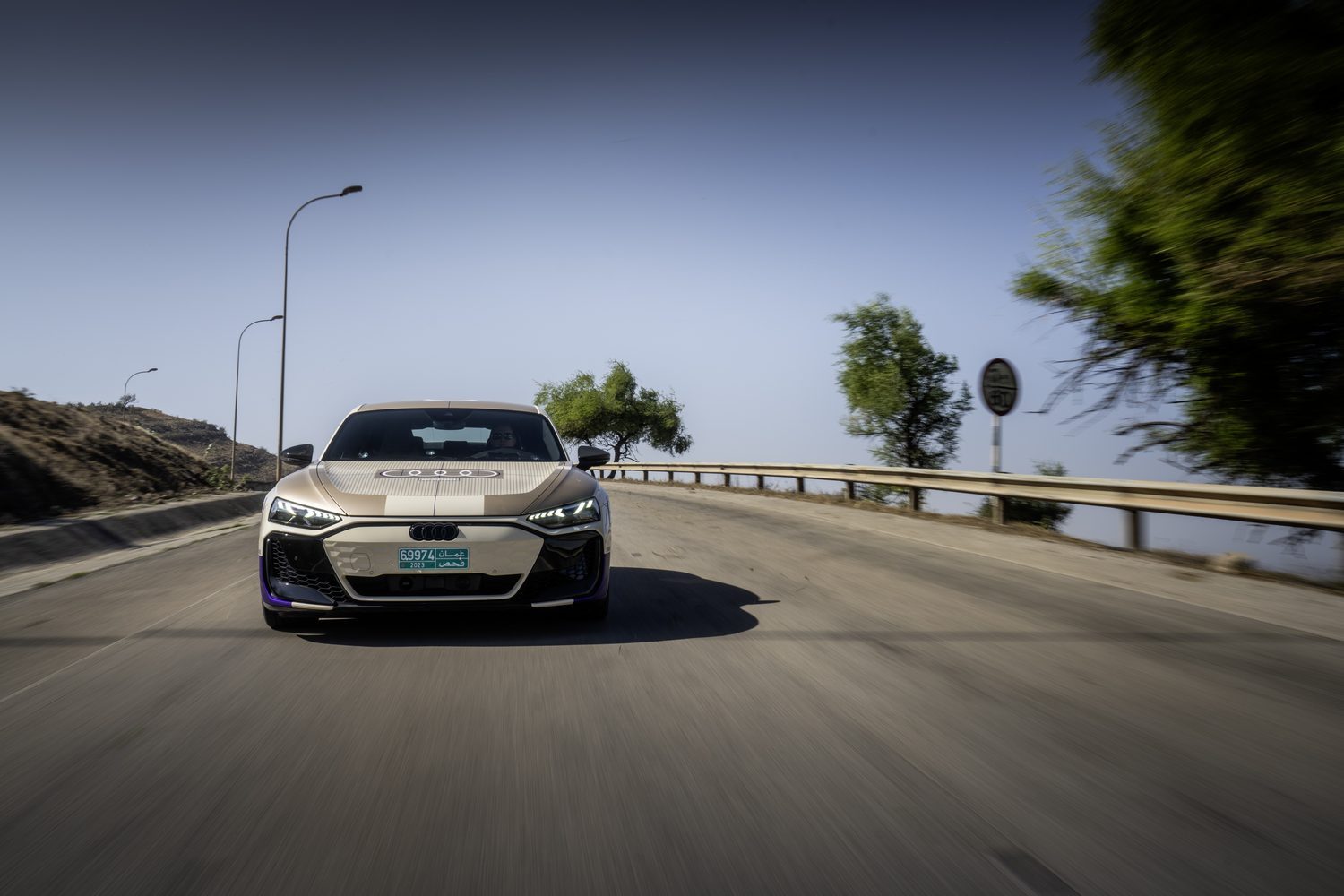
The focus of this test drive was on considerable chassis changes. The current car uses a three-chamber air spring system with variable damping to allow a range of settings and ride heights. The new car uses a simpler single-chamber air spring design, but adds far more sophisticated dampers featuring motor pump units that can alter the forces within at incredible speeds. At the heart of this are two electric motors driven directly from the Audi's high-voltage battery pack. These motors drive hydraulic pumps that can deliver a precise volume of damper oil to each shock absorber depending on requirements.
The end result is a system that can react quickly to conditions and driving style and alter the characteristics of the suspension by driving mode, too. It can also be used to do away with traditional fixed anti-roll bars as it counteracts body lean into a corner. In fact, it can lean the car into a corner in a similar manner to how a motorcyclist does, while lifting the nose under braking, and lifting the rear of the car under acceleration.
While Porsche deploys this system in the name of performance, and it can take a little getting used to in its more extreme settings, Audi uses the force-countering measures only in the Comfort driving mode and it's very subtle in operation. It can be switched off entirely, and it can't be used in the other driving modes.
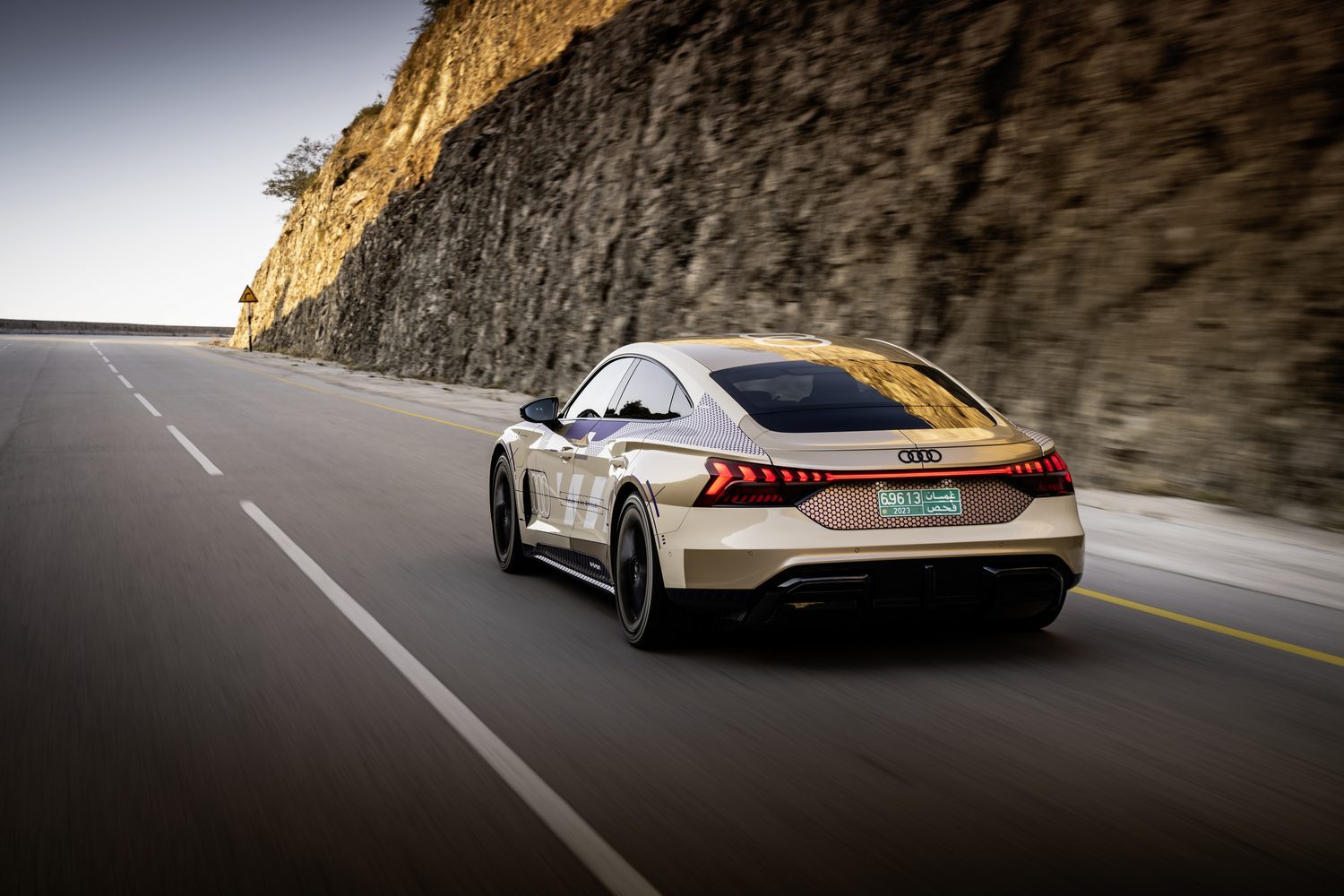
On a sweeping test route, the RS e-tron GT certainly felt comfortable and composed, living up to the GT part of its name. Audi's engineers told us that because the new system can be used to make the car more comfortable, widening its operating window, it allowed them to go more extreme for the Dynamic driving setting. In truth, we didn't get the opportunity to push it to its limits on track, so we'll have to take their word for that.
Aside from the suspension, we found the brakes strong and easy to modulate and the steering lovely and responsive and direct - yet never twitchy at speed. As in the current RS model, the prototype featured rear-wheel steering to offer the best of both worlds.
The final party trick the new suspension allows is to quickly raise the car up when you open a door, making it easier to get in or out. You'll be surprised at how fast this happens the first time you see it in operation, making it highly effective and removing a barrier for prospective buyers that found the e-tron GT too low to be getting in and out of.
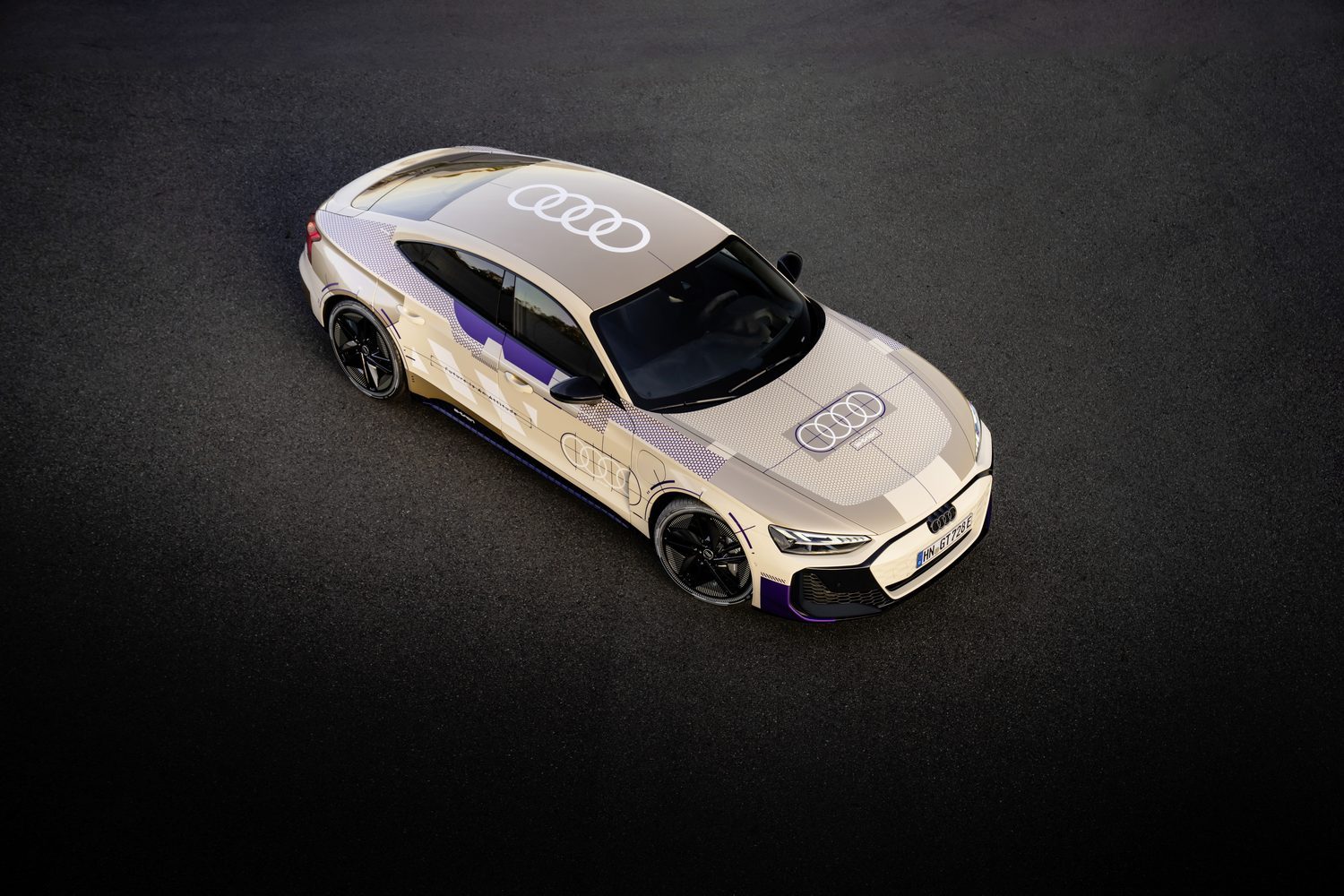
What you get for your money
It would be guesswork at this point to talk about pricing of the new e-tron GT, as it's unlikely to arrive in Ireland until the very end of 2024 or, most likely, just in time for the "251" registration plate in early 2025. For reference, the current e-tron GT is priced from €108,590 and the RS e-tron GT is €148,590 so don't be surprised if the new car costs more than that.
We suspect that the new suspension system will only be offered on the RS model, and there are rumours that there will be a new 'performance' variant as well.
Summary

We know this review is light on detail, but Audi really didn't want to say too much about the updated e-tron GT other than to draw attention to its new suspension system. Early signs are that Audi will use this technology to further distance the e-tron GT from its Taycan cousin, letting Porsche focus on performance and handling while it develops a more traditional GT car designed for long hours at the wheel, with an upgraded electric system to enable that. We'll know more in a few months, but there's no doubt the updated model will give existing owners of the e-tron GT good reason to trade up.



